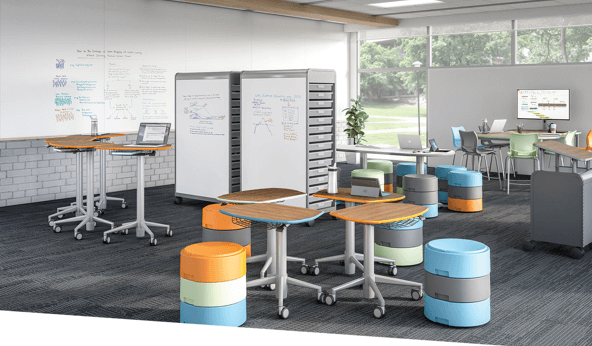While we talk about a learning environment in the classroom, the first thing that comes to your mind is the ambiance. One can never overlook the efforts put by the teacher. However, there is another perspective on it.
First of all, the arrangement of the class should be spot-on for the children to be physically active and in the right formation. One can not neglect the layout of the class, along with the efforts of a teacher. And, of course, then comes the content of what the teacher is actually imparting.
In this article, we will dive deeper into the physical layout of a class that teaches young children. After all, they are at a tender age, and they need all the support that anyone can give.
The Ingredients
It’s essential to recognize the ingredients for the reasons we just mentioned above. Still, many classrooms are not at par with learning standards that students would aspire to. So, here we are with a detailed perspective of how to arrange space in the classroom. Remember, student desks at school play a huge role in that arrangement.
Space Arrangement as a Topic
Once you get into space arrangement in a class, the whole physical layout comes into the picture. Your teaching style also has an influence on what design you choose. Also, the size of the group, age group of children, and even the color of your classroom has an impact.
- Filling in the artwork and plants
Never hesitate to fill your classroom with plants and other artwork that amplifies the sense of learning in students right from the beginning. Give the class some personal touch for the age group of students learning from you. The more colorful your classroom looks, the better it will attract learning. Make sure the class has the charts related to their education that help learn faster than a notebook. Live models are also preferable.
- Placement of the Desks
In a classroom, the placement of the desk takes the most abundant space. Any teacher can vary it according to his preference, but there’s always some communication gap if it’s not arranged correctly. Traditionally, there were 30 different rows of desks with three columns, and a teacher’s desk faced right in front. However, that trend has long gone.
Now, for a better discussion perspective, you can use the U-shape. In fact, there can be different rows of U-shape in your classroom for better disbursement of information. Every student should be able to look at every other student and the teacher as well. This is what student desks in Brisbane are arranged like.
Managing Environmental Preferences
One can quickly see how the environment influences your teaching style. The atmosphere of a classroom includes lighting, noise, temperature, and the response of students. This environment has to be molded according to the students as they learn faster in that case. But how to address those needs? Take a look at the following points.
- The children should move around
When it comes to early childhood, children have to move around to promote their motor skills. The classroom should be designed in a similar manner where children are tempted to get up from the seat rather than sitting still. They have to acquire new information for which they need to explorer by engaging their senses.
- Informal furniture arrangement helps
It’s not always the u-shape method that helps. You can also implement the free desk set up so that children do not find it strict. If there are any changes to be made, make them immediately.
- The Desk Ergonomics
The ergonomics of your furniture have to be spot-on for the children to sit with full support all throughout the day. The chair should not be hard, and they cannot sit straight up all day long.
You have to make some variations in the way you and the children set to keep them away from discomfort or fatigue. They should be given opportunities to change their posture.
- Get Temperature Preferences from Children
Let them give their feedback on the temperature of the class that affects them. Encourage them to provide their own preference in this regard. You cannot use your own instinct on how the children are comfortable for longer durations.
- The Mixed Bag of Lighting
Excess light doesn’t always help. The classroom has to maintain a well-established balance between highly lit and dimly lit areas. It also encourages children to move according to their preferences at that point in time. Moreover, children can become restless due to excessively bright light. Also, unduly low light doesn’t help with their eyesight. So, a balance between both will always help.
If you need any help with choosing student desks at school, you can go through the guide. The guide lists out all the dimensions for different age groups of children. Remember, the balance between different environments is a thin line, and you need to nail it.







